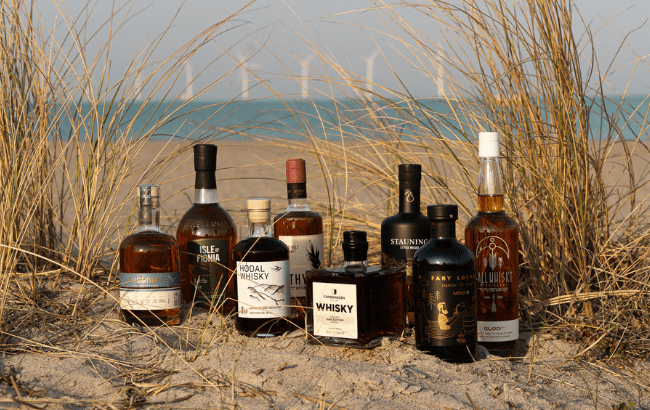Danish distillers set out whisky definition
By Nicola CarruthersTen Danish distilleries, including Stauning, have joined forces to launch whisky standards for the nation with the aim of securing formal regulations in the future.

On 10 April 2025, 10 whisky producers in Denmark launched the Danish Whisky Manifesto – a set of rules for the category.
The aim of the manifesto is to ‘strengthen Denmark’s position as a whisky-producing country, and to protect and promote the category.
In the future, the group of distillers plan to secure a geographical indication for the category in the EU and global markets.
The coalition has launched a new ‘Authentic Danish Whisky’ logo that will act as proof that a product meets the standards set out in the manifesto.
The group of distilleries includes: Copenhagen Distillery, Fary Lochan, Knaplund Distillery, Nordisk Brænderi, Nyborg Distillery, Sall Whisky, Stauning, Thomæs Distillery, Thy Whisky Distillery and Ærø Distillery.
Hans Martin Hansgaard, co-founder of Stauning Whisky, explained that the group’s manifesto was inspired by The Nordic Kitchen Manifesto, which was launched in 2004 to help “define a new culinary tradition in Denmark”.
“With the whisky manifesto we are defining what Danish whisky is,” he continued. “Both Danish and international consumers are increasingly seeking authentic products with transparency about ingredients and production methods.
“This is part of the reason why we welcome over 20,000 visitors annually to our distillery in Stauning. But there’s still a huge potential to strengthen the story of Danish whisky abroad. The new manifesto will help us do just that.”
The guidelines
To be able to carry the ‘Authentic Danish Whisky’ label, the product must be mashed, fermented and distilled in Denmark, aged for at least three years in the country, and made from Danish cereals (if not, this must be stated clearly on the label).
Furthermore, producers are allowed to use malted and unmalted cereals, alongside different types of distillation equipment and various types of wood. The addition of colourants, flavourings or sweeteners is prohibited.
From 1 January 2030, all whiskies must be distilled entirely from cereals of certified Danish origin, or if cereals with other origins are used it must be stated clearly on the label of the product when bottled as ‘Danish whisky’.
Danish single malt whisky must be distilled from a mash of 100% malted barley. Danish rye whisky, wheat whisky and oat whisky must be distilled from a mash consisting of at least 51% of the specified grain.
The coalition of distillers also noted that there has been political support for its efforts to establish rules for the category.
The Danish minister for Urban and Rural Affairs and Tourism, Morten Dahlin, has noted that local whisky offers “great potential for contributing to the attraction of Danish food and gastronomic experiences”.
He said: “We need to strengthen the story of Denmark – including the story of our food, gastronomy, and our cultural history as an agricultural country. A strong narrative is crucial for attracting tourists to Denmark, and that’s why I’m pleased, as minister, when Danish producers take the initiative and come together around something like the Danish Whisky Manifesto.
“When tourists travel in pursuit of Danish food and gastro experiences, it also benefits local accommodation providers, the culture and experience industry, and retail across the country. It also enhances regional and local pride.”
The manifesto highlighted how Danish whisky is available in more than 20 countries, including the US and China. The country’s distilleries welcome tens of thousands of visitors every year.
Denmark’s largest whisky maker, Stauning, recently cut approximately 25% of its workforce following Diageo’s exit from Distill Ventures.
European whisky producers, such as Stauning, have been prohibited from labelling their rye whiskies ‘rye whisky’ due to a forgotten 20-year-old EU agreement with Canada.
Related news
Marie Brizard buys controlling stake in Interbrands Denmark
